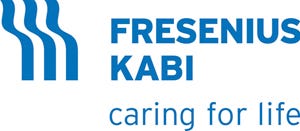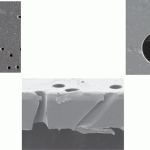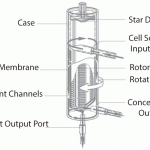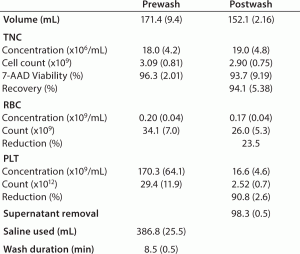- Sponsored Content
Cell Washing with the LOVO Cell Processing SystemCell Washing with the LOVO Cell Processing System
August 15, 2014
 The ability to successfully produce cell-based products is partially dependent on the technologies and instruments available. Volume manipulation, supernatant or culture media exchange, and cell washing of the cell product can present a significant challenge, especially when cell recovery needs to be maximized without compromising viability.
The ability to successfully produce cell-based products is partially dependent on the technologies and instruments available. Volume manipulation, supernatant or culture media exchange, and cell washing of the cell product can present a significant challenge, especially when cell recovery needs to be maximized without compromising viability.

FIGURE 1: SEM images of the track-etched polycarbonate membrane used within LOVO’s proprietary spinning membrane separation device; view normal to the membrane surface (left), cross-sectional view of the membrane (middle), and close-up of the 4-μm pores (right)
LOVO is a multiuse, bench-top instrument that pumps a cell solution through a spinning membrane filtration device to allow for rapid fluid management and fast, efficient cell processing. At its core, LOVO leverages Fresenius Kabi’s proprietary spinning membrane separation device, which uses a 4-μm track-etched polycarbonate membrane (Figures 1 and 2), and allows for separation of target cells through size discrimination, as well as supernatant removal and product concentration or dilution. The use of the spinning membrane technology results in cell processing that is fast and does not impact cell viability (Table 1).
LOVO easily integrates into cell processing workflows, from source-product preparation to culture harvest to post-thaw washing. LOVO is equipped with configurable procedure settings that allow the operator to modify processing criteria while maintaining sterility with a closed system environment. Incorporation of spinning membrane filtration allows for continuous flow and nonpelletizing cell processing that can remove up to 99.9999% of supernatant or cell culture media while removing the need for manual resuspension of cells.

FIGURE 2: LOVO proprietary spinning membrane filtration device
Preparation of Washed TNC Product from a Standard Apheresis Collection: Standard apheresis peripheral blood mononuclear cell (PBMC) products (n = 8) were collected from healthy nonmobilized donors and washed with 0.9% saline using LOVO’s default two-cycle wash parameters. A postwash product volume of 150 mL was targeted. Results are shown as mean (SD) in Table 1.

TABLE 1: Results
The LOVO cell processing system retained 94% of total nucleated cells (TNCs) while washing out over 90% of the platelets and 98% of the original supernatant in less than nine minutes. •
Chris Wegener is principal engineer, research and advanced technologies at Fresenius Kabi; 847-550-2300; [email protected].
You May Also Like





